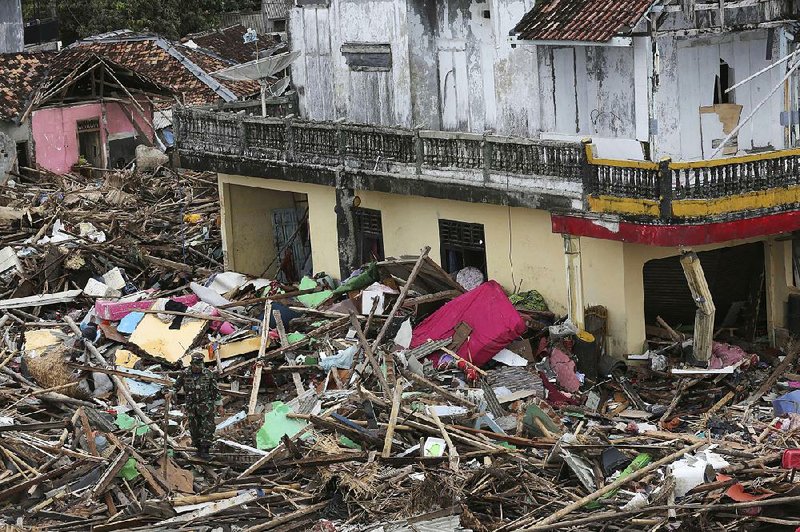JAKARTA, Indonesia -- Heavy rain and blocked roads Tuesday hampered rescue efforts three days after a tsunami struck Indonesia, as the death toll from the disaster rose to 429 people.
At least 128 people are still missing, with hope fading that they will be found alive. More than 1,400 others were injured when a wave slammed into the coast of Java and Sumatra on Saturday evening, shortly after a large eruption of the Anak Krakatau volcano, which lies in the Sunda Strait between the two islands.
It was a somber Christmas Day along the coast, with normally joyful celebrations replaced by prayers for the victims. Bodies are still being found nearly three full days after the tsunami struck without warning, and the search area is still being expanded to more remote areas only now found to have been hit by the killer wave.
"Our main concern is with the health problems," said Dino Argianto, who is in charge of humanitarian operations for Oxfam Indonesia. "With regards to dead body management, the problem now is the victims that have not been found and are buried under ruins. We need to find them as they can be a source of illnesses. They can also pollute the waters."
Meanwhile, the Anak Krakatau volcano, where an eruption and partial collapse is thought to have caused a landslide that unleashed the tsunami, is still erupting, billowing white smoke and clouds of ash hundreds of yards into the air.
Sutopo Purwo Nugroho, a spokesman for the National Disaster Management Agency, said civilians are being told to stay at least 1.2 miles away from the coast.
"There's still potential of a tsunami," he said.
Nugroho said rescuers also were struggling to reach some remote areas because of blocked roads.
Military and civilian rescue teams used heavy equipment to shift the debris strewn along the coast, while others used drones to assess the extent of the affected area and sniffer dogs to find bodies in the wreckage. Victims were laid out in body bags and identified by weeping relatives.
Dionisius Agnuza, 20, was visiting Carita island as part of a student trip for psychology majors at the University of Indonesia. On Saturday evening, he was lounging on the beach under a full moon, watching lava spewing out from Anak Krakatau. Then the wave hit.
"There was no warning at all, and everything happened so suddenly," he said.
"I was swept away and hit a wall. I almost drowned, but thankfully I was saved when I was near the coast," he said, explaining that one of his friends had managed to pull him out of the rushing waters.
Many of his friends went to hospital with cuts from glass shards after the windows of their hotel broke. He has bruising and potential nerve damage in his back after being slammed into a concrete pole. But he says he is only now realizing how lucky he was.
"It was a real near-death experience," he said. "When we were there, we were just thinking of the very technical ways to survive: we weren't sad or anything. But I'm not traumatized."
At the Rahmat Pentecostal Church in Carita, the mood was somber. Pastor Markus Taekz told The Associated Press that only around 100 people turned up for his Christmas Eve service, half the usual number, with a normally joyful celebration now "full of grief."
Indonesia, a vast archipelago of 260 million people, is the world's most populous Muslim nation, but its 17,000 islands are also home to smaller but still significant numbers of Christians, Hindus and Buddhists. Church leaders called on their congregations to pray for victims.
Indonesia President Joko Widodo vowed to have tsunami-detection equipment repaired or replaced, after his own officials complained that a system of warning buoys -- set up after the calamitous Indian Ocean tsunami of 2004 -- had not been functioning for years.
But experts said it would have been hard to see this tsunami coming. The government's early warning sensors are set up to monitor earthquakes -- which are responsible for most tsunamis -- and not volcanic activity. And even a functioning system of buoys would have given minimal warning given how close the volcano was to shore and how fast tsunami waves travel.
For now, though, the focus is on rescue efforts, and a search area that continues to expand to remote areas that were previously thought not to have been affected.
"We're finding more victims in remote areas," said Yusuf Latif, a spokesman for the national search and rescue agency.
A Section on 12/26/2018
